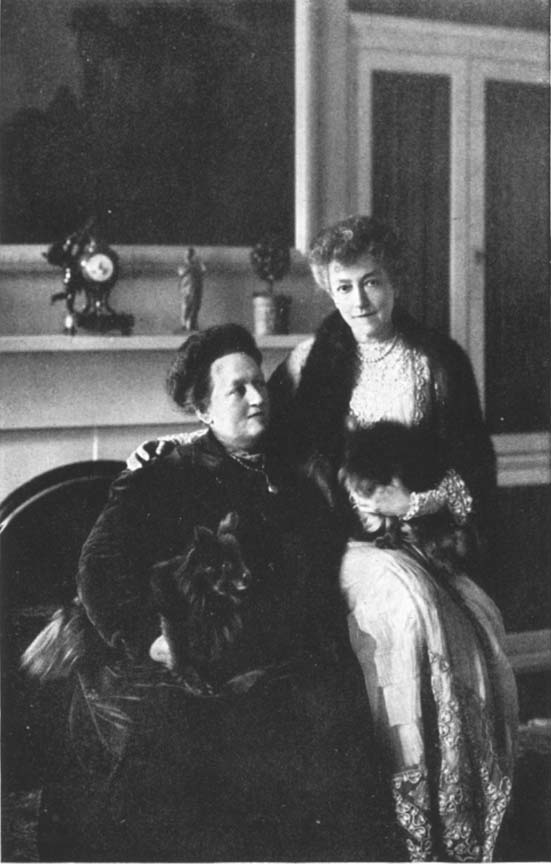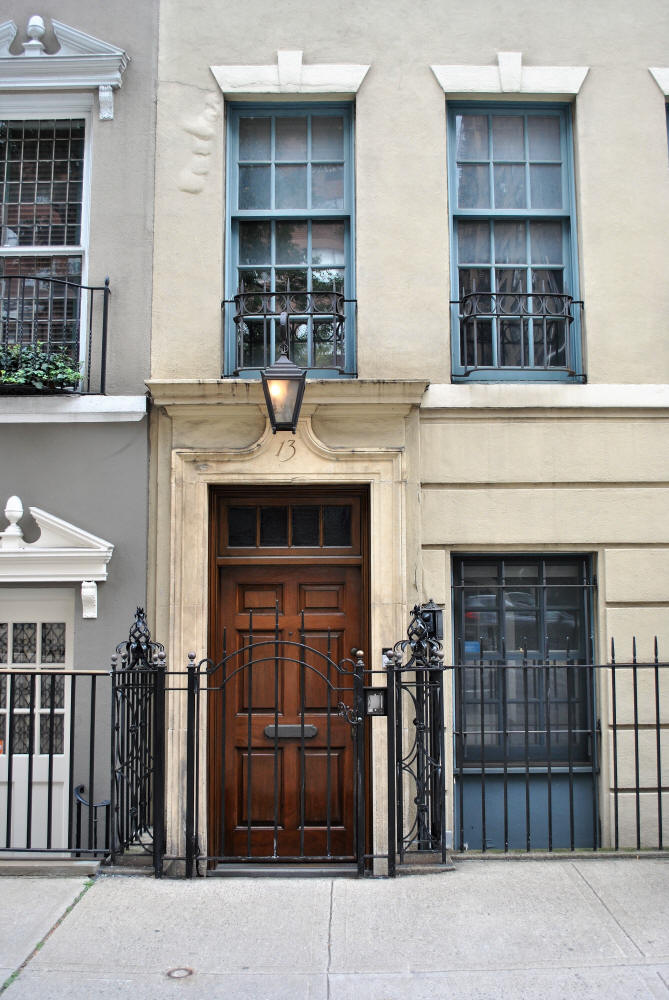Partner Elsie de Wolfe
Queer Places:
Irving House, 122 E 17th St, New York, NY 10003, USA
123 E 55th St, New York, NY 10022
Colony Club, 120 Madison Ave, New York, NY 10016, USA
Colony Club, 564 Park Ave, New York, NY 10065, Stati Uniti
Princess Theatre, 104-106 W 39th St, New York, NY 10018
13 Sutton Pl, New York, NY 10022, Stati Uniti
Maine Chance Spa, Maine Chance Ln, Mt Vernon, ME 04352, Stati Uniti
Woodlawn Cemetery, E 233rd St & Webster Avenue, Bronx, NY 10470, Stati Uniti
 Elisabeth
"Bessie" Marbury (June 19, 1856 – January 22, 1933)[1]
was a pioneering American theatrical and literary agent and producer who
represented prominent theatrical performers and writers in the late 19th and
early 20th centuries and helped shape business methods of the modern
commercial theater. She was the longtime companion of
Elsie de Wolfe
(later known as Lady Mendl), a prominent socialite and famous interior
decorator. They met at a luncheon given by their mutual friend,
Sarah Cooper Hewitt (mother of the Hewitt Sisters,
Eleanor and Sarah Hewitt.)
Elisabeth
"Bessie" Marbury (June 19, 1856 – January 22, 1933)[1]
was a pioneering American theatrical and literary agent and producer who
represented prominent theatrical performers and writers in the late 19th and
early 20th centuries and helped shape business methods of the modern
commercial theater. She was the longtime companion of
Elsie de Wolfe
(later known as Lady Mendl), a prominent socialite and famous interior
decorator. They met at a luncheon given by their mutual friend,
Sarah Cooper Hewitt (mother of the Hewitt Sisters,
Eleanor and Sarah Hewitt.)
Bessie Marbury was born and raised in the affluent and cultured home of one
of 19th-century New York's oldest and most prominent "society" families. She
was reputedly a descendant of Calvinist Anne Hutchinson (née Marbury), who
co-founded Rhode Island after her banishment from Massachusetts Bay Colony.
Bessie Marbury both used and defied these connections during the Victorian era
to establish herself as an important literary and theatrical talent agent and
theatrical producer, helping to define and create these very professions as
they emerged in the new world of mass production, advertising and popular
culture in post-Civil War American society.
For many, Marbury remains a bundle of contradictions. Although she was the
embodiment of female independence in almost every way, she initially opposed
suffrage. She made a bold reversal once women in the United States did receive
the right to vote, and in 1918 she became active in the Democratic Party,
serving as a delegate. She was also a passionate convert to Roman Catholicism.
She was likewise very active in the Knights of Columbus, a Catholic
organization. In 1923 she published an autobiography, My Crystal
Ball:Reminiscences (NY: Boni and Liveright, [1923]). She had earlier
published Manners: A Handbook of Social Customs in 1888.
Marbury never married, but starting in 1885 lived openly with
Elsie De Wolfe in what many observers accepted as a lesbian relationship,[2][3][4]
first at Irving House, then East 55th Street and last at 13 Sutton Place, the Amazon Enclave where also
Anne Morgan and
Anne Harriman Vanderbilt
lived. It was during an amateur production for the opening of swank Tuxedo Park
in 1886 that Marbury met de Wolfe.

by
William Ranken

.JPG)
Irving House
.JPG)
First Colony Club, NYC

Second Colony Club House, NYC

13 Sutton Pl
In 1903, along with Anne Morgan and Anne Harriman Vanderbilt, Marbury helped organize the Colony Club, the first women's social club in New York.[3] They engaged Stanford White, then New York's most famous architect, to design the interiors of the Club.[4]
Reading the diaries Morgan began keeping in 1903, Alfred Allan Lewis argues
that she fell in love with Marbury but that Marbury, while flattered by and
welcoming of the younger woman's ardor, remained primarily devoted to de
Wolfe. She became a role model for Morgan's own career as an activist and for
her subsequent romantic and socially influential partnership with Anne
Vanderbilt.
Marbury had a long lasting friendship with
Elizabeth Arden
(1878-1966), a Canadian-born American businesswoman who founded what is now
Elizabeth Arden, Inc. They spent many weekends at Marbury’s Maine home,
Lakeside Farm. After Marbury’s death in 1933, Arden bought the property with
the intention of fulfilling Marbury’s wish that it be turned into a home for
working women—though it eventually became part of a luxury resort instead.
In 1917 Clifton Webb was the sinewy,
sensuous dancing star of "Love O'Mike," a musical comedy produced by Elisabeth
Marbury and Lee Shubert. During the
show's run, Dr. Karl Reiland, rector of St. George's Episcopal Church in New
York, publicly objected to Webb's dancing, calling modern dance nothing more
than "jungle antics."
Marbury died in 1933. Her funeral at St. Patrick's Cathedral was attended
by an impressive array of the most important American leaders and dignitaries
of the day. De Wolfe was noticeably absent from the funeral, despite the fact
that she was the prime beneficiary of Marbury's will.
Bessie Marbury is buried in Woodlawn Cemetery in The Bronx, New York City.
My published books:


BACK TO HOME PAGE

- https://en.wikipedia.org/wiki/Elisabeth_Marbury
 Elisabeth
"Bessie" Marbury (June 19, 1856 – January 22, 1933)[1]
was a pioneering American theatrical and literary agent and producer who
represented prominent theatrical performers and writers in the late 19th and
early 20th centuries and helped shape business methods of the modern
commercial theater. She was the longtime companion of
Elsie de Wolfe
(later known as Lady Mendl), a prominent socialite and famous interior
decorator. They met at a luncheon given by their mutual friend,
Sarah Cooper Hewitt (mother of the Hewitt Sisters,
Eleanor and Sarah Hewitt.)
Elisabeth
"Bessie" Marbury (June 19, 1856 – January 22, 1933)[1]
was a pioneering American theatrical and literary agent and producer who
represented prominent theatrical performers and writers in the late 19th and
early 20th centuries and helped shape business methods of the modern
commercial theater. She was the longtime companion of
Elsie de Wolfe
(later known as Lady Mendl), a prominent socialite and famous interior
decorator. They met at a luncheon given by their mutual friend,
Sarah Cooper Hewitt (mother of the Hewitt Sisters,
Eleanor and Sarah Hewitt.)

.JPG)
.JPG)



